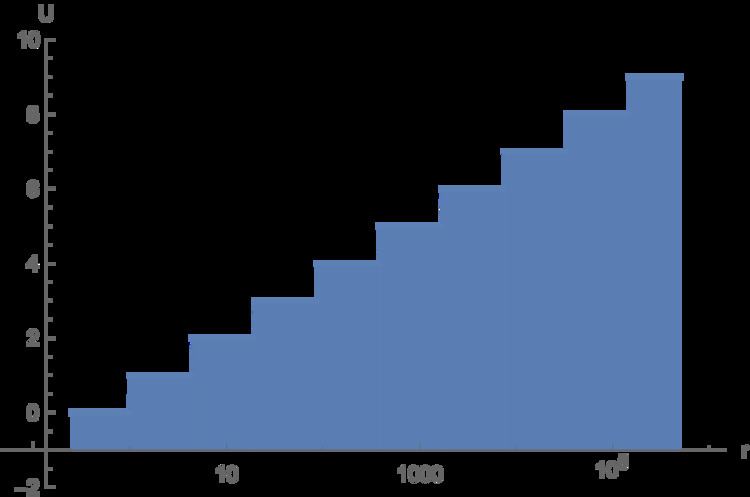 | ||
The uncertainty parameter U is a parameter introduced by the Minor Planet Center (MPC) to quantify concisely the uncertainty of a perturbed orbital solution for a minor planet. The parameter is a logarithmic scale from 0 to 9 that measures the anticipated longitudinal uncertainty in the minor planet's mean anomaly after 10 years. The uncertainty parameter is also known as condition code in JPL's Small-Body Database Browser. The U value should not be used as a predictor for the uncertainty in the future motion of near-Earth objects.
Contents
Orbital uncertainty
Orbital uncertainty is related to several parameters used in the orbit determination process including the number of observations (measurements), the time spanned by those observations (observation arc), the quality of the observations (e.g. radar vs. optical), and the geometry of the observations. Of these parameters, the time spanned by the observations generally has the greatest effect on the orbital uncertainty.
Objects such as 1995 SN55 with a condition code (Uncertainty Parameter U) of E where the eccentricity is assumed and is lost. 1994 WR12 has an Uncertainty Parameter of 8, and the next good chance to observe the asteroid may not be until November 2044 when the uncertainty allows it to pass somewhere between 0.03–0.19 AU from Earth.
Calculation
The U parameter is calculated as follows:
First the in-orbit longitude runoff
with
In-orbit longitude runoff is then converted to the "uncertainty parameter" U, which is an integer between 0 and 9. Theoretically the value can be less than 0 or more than 9 (for instance, as of September 10, 2016, Ceres technically has an uncertainty of around -2.6, but is instead displayed as the minimal 0.)
648 000 is the number of arc seconds in a half circle, so a value of 9 would mean that after 10 years, the object would have an estimated positional uncertainty of at least 40 degrees, or nearly 80 times the size of the full Moon.
